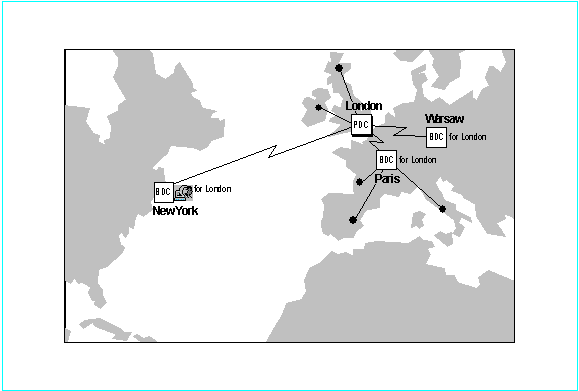
The most important location considerations are where to locate BDCs that will act as account logon servers and how to plan account replication traffic across WAN links. If your WAN speed or bandwidth is too low, you will want to arrange for logon to occur at a local backup domain controller.
Think of your networked organization in terms of sites. A site is a well-connected LAN—it may be separated by fast links such as bridges and routers, but not asynchronous (WAN) links such as T1, 56K, or ISDN. In most cases, sites correspond to physical locations such as Seattle, Paris, New York, and so on. Is your networked organization one location (a well-connected LAN), or does it consist of several locations connected by WAN links?

WAN Connectivity
The physical distribution of BDCs is determined by several factors: line speed, link reliability, administrative access, protocol, user authentication requirements, the number of users to be supported at a site, and locally available resources.
The preceding diagram represents a part of the network topology that one of these domains will have to service. There are several networked hub sites out of London that would be part of a CentralEurope domain.
This diagram also shows that the European PDCs reside in London, the main hub to all of Europe. The European PDCs will then replicate to each of their European backup domain controllers at each site, including New York. The CentralEurope PDC replicates all changes to the CentralEurope BDCs. These changes include anything from a user password change to adding accounts or groups.